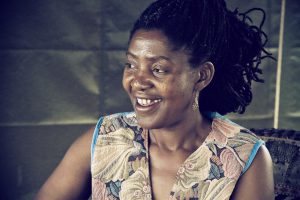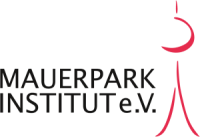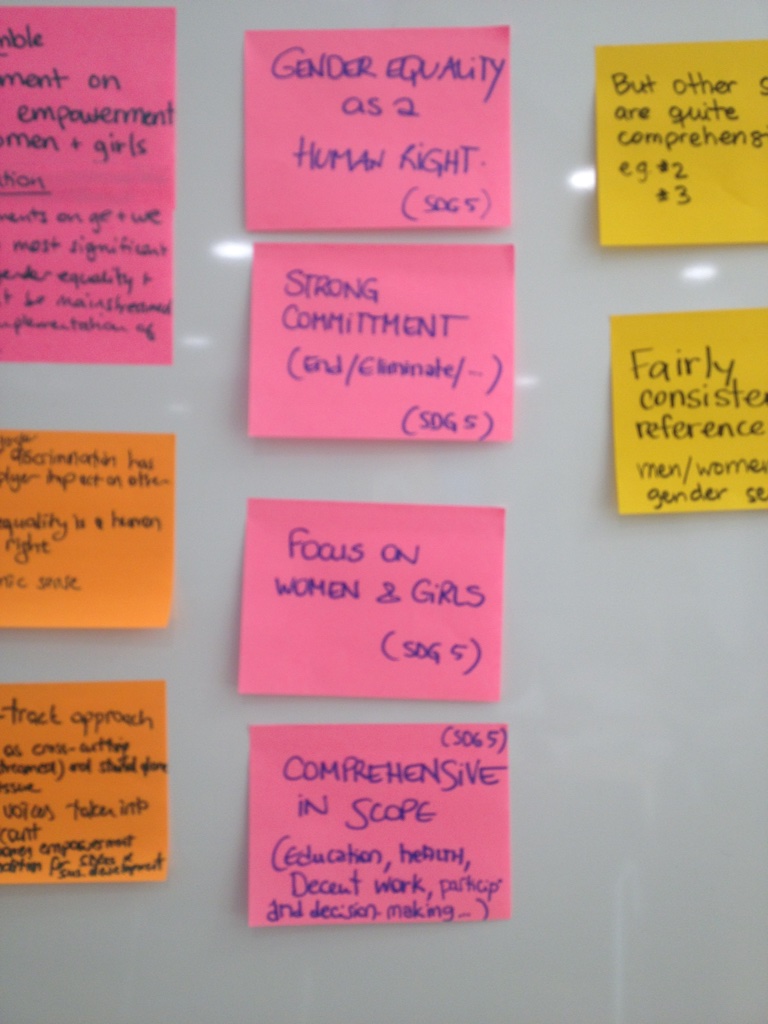October 2016
by Nicola Popovic

When she speaks about her decision to join the rebels across the border in Mozambique, her face and demeanor embody that of a teenage girl fascinated by the spiritual power around the freedom fighters, disappointed by her conservative Christian education, and denied the possibilities white kids had in Southern Africa in the 1970s. The Zimbabwean myth that a freedom fighter can change “from one being into another” attracted the young Shona woman. It led to her decision to pay back her old school director for his maltreatment of her and to join the rebel forces. The name she chose for herself is “Freedom” and she insists that it was not only a free choice for her to join the rebel forces.
The context in which Freedom grew up left no space for the professional development, political participation nor economic prosperity for a young black woman. Unequal power relations were determined by factors such as race, gender and ethnicity (for example, between the Shona, Nbdele and Tonga). During the colonialisation process, Rhodesia was under the rule of the British crown and foreign investors, most of whom were European. The country’s economic and social structures were determined by large farms inhabited by their white owners as well as the numerous black farm employees who earned very unequal pay.
When the pressure to hold democratic elections increased among the population in Zimbabwe, in 1965 Southern Rhodesia declared unilateral independence, maintaining colonial rule under Ian Smith. The continuation of the colonial structures eventually led to a civil war from 1966 to 1980 starting with an uprising of the black local population. Among the most prominent objectives of the liberation struggle were the establishment of a democratic and representative government (one man one vote), the unification and identification of an African people, the end of oppression, and liberation from colonialism and imperialism.[1]
The promise for a more equal and just society led many young Zimbabwean men and women to join the freedom fighters. A female ex-combatant states: “I heard it said that if the armed struggle was successful we would have the same education as the whites. …The final thing that moved me to go to Mozambique was the curfew. Blacks were not allowed to go out after 6 o’clock. I knew by right I was a Zimbabwean yet I hadn’t the pleasure of moving in the country as an indigenous person.”[2]
The reasons men and women joined the rebel forces were as manifold, diverse and influenced by their gender roles as their actual experiences of the armed conflict. Because of the complexity of political and ethnic identities that still shapes Zimbabwe today, there is only limited space for the narrative of female freedom fighters. Their experiences of carrying a gun in hyper masculine and militarized environments as well as their experiences of sexual abuse, the double burden of family obligations, and changing gender identities have never been acknowledged in a way that recognizes and accepts these experiences. Even though they are celebrated by nationalist leaders, female freedom fights remain surrounded by images of violence, aggression and sexual availability that catapults them outside the recognised, –traditional gender role that society has prescribed for women.
In Zimbabwe and many other situations, traditional gender differences are overcome for the sake of the struggle. During the Zimbabwean struggle, women were welcomed as combatants, supporter, nationalists, and politicians but also maintained their traditional female roles in the household. Traditional female tasks as well as non-conventional tasks, such as carrying a gun, were part of the female involvement of armed struggle. Women often carried out traditional supporting roles as cooks, cleaners and secretaries rather than military commanders. Rural civilian women often supported the guerilla movement by providing food, information, warm water and shelter. The support in food and goods not only meant that women supplying the guerrillas would put themselves in danger but that they also had to compensate for the economic loss to their own families and households.
On the frontlines, men and women found themselves both voluntarily and non-voluntarily involved in the armed struggle. The reasons for involvement varied. Freedom’s reasons were based on her reflections about her societal status, and the dreams and freedoms she strove for through the armed struggle. While others had political objectives from the beginning of their involvement, Freedom only came to discover the political concepts behind the liberation movement when she was already involved in it.
Not all women who became part of the freedom fighters’ support system or even as active fighters joined out of political conviction. Fear, for example, could stem from both sides. Both the Rhodesian soldiers and the guerillas could be a central reason for the involvement in the armed struggle for men as well as women. Poverty, abduction and empathy can also provoke various forms of participation in an armed conflict. Even if not politically involved, civilian women often were caught in between the frontline requests for food, shelter and physical availability. “The connections made by women between the lights of poverty, violence and struggle during the revolution and aid policies, and the failures of government pointed to the continuities of this everyday terrain of local resistance.”[3]
In Zimbabwe, spirituality is an additional factor that interplays with other political and social dynamics. Spirits and mediums are highly connected to ancestors and the land, the ownership of which clashes with colonial land policies and economic exploitation, representing a central issue in the armed conflict and political debate even today. The myths around the spiritual power of the freedom fighters and the spirits inhabiting Zimbabwean soil played a large part in Freedom’s decision to participate in the armed struggle, which is also the case for other rebels.
Armed conflict can dissolve the public-private dichotomy that shapes the female role in society, and instead make women contributors and allies in the war, even if passively and indirectly. While mere survival for her and her family is a lot less romantic, it is a strong determining factor that made women compromise and participate in the revolutionary struggle. “Rich complexity marks women´s understanding of what they participated; the nature of women´s political consciousness was differentiated and varied from slogan-led politicization to grounded experiences of felt oppression. These women´s understandings of the politics of war emerged from their own local experiences in the main and involved a language of resistance that is dedicated on limited life choices, the degradation of poverty voiced as anger or the wordless lassitude of clapped hands to denoted hopelessness.”[4]
While their contributions may have been diverse, there is a discourse that has a romanticizing connotation in political speeches in the liberated post-colonial Zimbabwe today. The fact that women have been fighting next to men is not a secret. For example, Robert Mugabe, then leader of the ZANU-PF armed wing, recognized that, ”‘our women fighters have demonstrated beyond all doubt that they are as capable as men and deserve equal treatment, both in regard to training and appointments. It is also necessary that we should promote more women to the High Command’.”[5] Even though there is political recognition of female freedom fighters, the voices of female ex-combatants are rarely heard; they seldom sit at the peace table and are hardly included in shaping national or international policy and politics now that the conflict has been settled. Their roles in the armed struggle as well as after its termination and the subsequent change in political leadership have had to continuously be re-negotiated until today.
It is even said that the “actual number of female fighters tends to be exaggerated. Figures for ZANU vary from one third of the total fighting force inside Zimbabwe to accounts of 1,500- 2,000 female fighters. (…) Figures in 1987 show that 75 per cent of women fighters and workers in ZANU camps in Mozambique were between ages of 14-24 while the remaining 25 per cent were in the 25-29 age group.”[6] While the number of active fighters may be lower than is often referenced, the number of women participating in the armed struggle by supporting the fighting forces both directly and indirectly remains unknown.
The variety of roles that women played as well as their significance and contributions to the armed struggle are often indirect, untold, and hidden behind the grey area between the faithful housewife and the heroic female guerilla fighter. It is hard to grasp the female perspective about the liberation struggle, political movements and the current political participation of women due to the invisibility of women and their perspectives on political developments, the insecurities women still face regarding their identity, and their role in political processes. The oral tradition of storytelling, poetry and drama that forms a rich part of Zimbabwean culture lacks documentation and integration in the writing of history. This article does not attempt to do that justice, but rather to highlight the existence of a different perspective of a liberation struggle that started over 30 years ago and has yet to end.
Nonetheless, the narrative of female combatants differs significantly from civilians, the diaspora and the side of the Rhodesian army. “These experiences are so filled with contradictions whereby women may not be faithfully following the roles read off from their domestic existence or from a military imperative; a woman growing food in the face of guerilla demands or resources and state counterinsurgency attempts to cut off such supplies cannot remain in the cozy category of the domestic but is drawn into and forms part of the public reality of war.”[7] Supplying food, washing of the guerrilla’s clothes, and also the threat or pressure to sexual relationships with participants of either side are still underestimated as collateral damage and passive involvement in the war. Nonetheless, it represents active participation that shaped the historic outcome of the liberation movement even though it remains unmentioned and appreciated in political discourse.
Freedom becomes angry when she remembers one military commander who ordered her to come into his tent. Being only being sixteen and without military training, it was easy for him to rape her. She remembers how useless it was to the report to her supervisor since all reporting lines would end up at the commander’s hands. Chains of command within the military are highly hierarchal and it was impossible to organize independent judicial systems in a liberation struggle such as that in Zimbabwe in the seventies. Access to justice or even compensation for sexual abuse perpetrated against female freedom fighters is unheard of in Zimbabwe as in most armed conflicts. Women are often portrayed as victims rather than as survivors, especially when it comes to sexual violence, since this portrayal does not seem to fit the image of a comrade fighting at the front line. The role of the victim and perpetrator may not always be as clear in the chaos of war, and sexual relations are often far more complex and multifaceted as the story Freedoms tells us is.
Even though a lot of women joined the freedom forces out of their free will, there are also testimonies about forced abduction of young male and female children who eventually became soldiers and often mistresses and wives to the male commanders. Sexual violence, beatings and abuse are recognized to have been common occurrences in the military camps, even for those who joined voluntarily, like Freedom. As in any armed conflict, sexual violence has not only been used as a tool to reward male combatants for their sacrifices and joy, not only to scare, threaten and torture the enemy’s side, but also to discipline and control within ranks. In militarized environments, sexual relations that occur without the use of force may be influenced by military hierarchies, the fear of violence and an unspoken obligation to consent. The exchange of sex for food and goods may also be symptomatic of situations of armed conflict and limited resources in the struggle for survival.
For a women´s movement to drive social change and lay a foundation of gender equality after an armed conflict, social and political consciousness and continuous revolt against oppression that prevents the re-collapse in old patriarchal power dynamics is required. Promises to be freed from the discriminatory white rule and access to free education and farm land were gender blind and given to women and men equally under the conceptual umbrella of socialism.
Reintegration in the post-colonial society after the end of the liberation struggle has been particularly challenging for women who broke their traditional gender role, and returned as war veterans and female liberation fighters. A return to the rural communities to fulfill traditional female roles was impossible for most female war veterans. The degradation to a level of insignificance in the division of labour and political decision making led to disillusionment, even denial of having participated in the armed struggle. For a former female combatant, it is nearly impossible to identify and share experiences and sentiments not just with the women left behind, but also with male comrades because they have been denied an equal stance with them post warfare.
Though being mentioned, women returning from the battlefield did not receive the same recognition as their male comrades. No demobilization or reintegration program existed in Zimbabwe, and women in particular found themselves being relegated to old gender roles that they no longer fit into. Additionally, female former ex-combatants had more difficulty accessing public security services. Women ex-combatants confronted challenges over their social reintegration, both in terms of facing personal stigmatization and social rejection and, at the national level, in terms of being accorded inadequate recognition for the part they played in the liberation struggle.[8]
In the late 1990s, former war veterans played violent roles in the political realm due to the lack of appropriated compensation for their services, as they claimed. They as well as the unemployed youth were easily mobilised and instrumentalised for political rallies and campaigns. The involvement of female ex-combatants in this time is unknown.
The formation of governmental structures, such as the Ministry of Women Affairs and Community Development in 1981, are an attempt to create space for the inclusion of gender issues at the policy levels. The formation of women´s organizations, including the establishment of the Women´s Coalition of Zimbabwe shows that initiatives have emerged after independence to promote an agenda pushing and protect women´s rights. However, the lack of funding, political power and internal unity paralyzed a common agenda of the women´s movement.
Freedom wished to find a job in conflict prevention to share her experience and knowledge about the temptations and horrors of revolution and war. She wanted to inspire with poetry and activism for peace. She did for many years but died in an accident, this year, in 2016. She is one example of the many strong and courageous women in Zimbabwe who joined a struggle for liberation, women who were not afraid to get hurt or even die. But she is also an example of a woman who treasured peace and kindness, poetry, music and freedom of speech. These women and stories should be made more visible and listened to. There are very valuable lessons to be learned from them. The international community should involve them more actively in peace processes and peacebuilding initiatives.
[1] Kriger, Norma (1992). Zimbabwe’s Guerrilla War: Peasant Voices. Cambridge: Cambridge University Press.
[2] Bond-Stewart, Kathy (1984) Young Women in the Liberation Struggle: Stories and Poems from Zimbabwe. Harare: Zimbabwe Publishing House. See also: http://www.e-ir.info/2007/12/13/the-construction-of-a-‘liberation’-gender-and-the-‘national-liberation-movement’-in-zimbabwe
[3] Gorman, Eleanor. The Frontline Runs Through Every Woman. African Issue.CPI Group, London: 2011, p.13.
[4] Gorman, Eleanor. The Frontline Runs Through Every Woman. African Issue.CPI Group, London: 2011, p. 70.
[5] Chogugudza, Patricia (2006) ‘Gender and War: Zimbabwean Women and the Liberation Struggle’. p. 39.
[6] Gorman, Eleanor. The Frontline Runs Through Every Woman. African Issue.CPI Group, London: 2011, p. 57.
[7] Gorman, Eleanor. The Frontline Runs Through Every Woman. African Issue.CPI Group, London: 2011, p. 23.
[8] Lyons, Tanya (2007) ‘The Forgotten Soldiers: Women in Zimbabwe’s Liberation War’. Southern Africa Report, 12:2, February.





